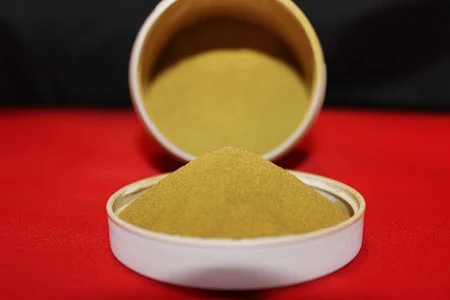Brass Copper-Zinc Alloys Spherical Powder
Formula | Brass, copper zinc alloy powder |
Synonyms | Brass spherical particle, Spherical brass powder, copper zinc alloy powder, Brass thermal spray powder, Brass gas atomized powder |
Appearance | Black Powder |
Particle Size | 15-45 um, 45-105 um, can be customized upon request |
Melting Point | 930°C |
Density | 8.73 g/cm 3 |
Tap Density | 3.7 g/cm³ |
Apparent density | 2.9-3.3 g/cm3 |
Description of Spherical pure Brass powder
Brass is a metal alloy predominantly made of copper and zinc, with varying proportions of these elements resulting in different types of brass, each with unique properties. Typically, brass consists of 60% to 70% copper, with the remainder being zinc. Some brass alloys also incorporate small amounts of other elements like tin, aluminum, lead, or nickel to enhance specific characteristics such as strength, corrosion resistance, or machinability.
Copper zinc alloy powder is a finely ground form of brass, used in various applications like metal coatings, sintered parts, and 3D printing. It offers good conductivity, corrosion resistance, and a distinctive gold-like appearance, making it valuable in both industrial and decorative uses.
Princeton Powder is a leading supplier of brass spherical powder. We specialize in a comprehensive range of spherical powder products and possess extensive expertise in additive manufacturing (3D printing) industry. Spherical brass powder is for sale at a competitive price.
Chemical Composition
Product | Copper-Zinc CuZn Spherical Alloy Brass Powder | |||||||
Purity | >99.5% | |||||||
Particle Size | 15-45 um, 45-105 um, can be customized upon request | |||||||
Chemical Composition (ppm) | ||||||||
Zn | Mg | Cr | Ni | Bi | Sb | Cu | Al | |
23.44 | 0.001 | 0.005 | 0.009 | <0.001 | <0.001 | 76.29 | <0.001 | |
Co | Cd | Pb | Sn | As | Fe | O | ||
0.002 | <0.001 | <0.001 | 0.015 | <0.001 | 0.042 | 0.051 | ||
Particle Size distribution
0-15μm, 15-53μm, 45-105μm, 45-150μm. (Various particle sizes can be customized)

Applications
Brass powder is used in applications such as metal injection molding, 3D printing, decorative coatings, friction materials, and in the production of sintered parts for automotive and industrial components. It’s also used in conductive inks and for cold casting.
Spherical Brass CuZn Powder Reference
Spherical brass powder fabricated by laser scanning
- The irregular particle may melt rapidly and then retract to spherical particle through balling effect by laser beam scanning. The approach of transferring irregular brass powder into spherical powder by laser scanning was explored. The influences of laser power and scanning speed of laser beam and the process of melting, spreading and retracting were analyzed theoretically. The results show that the times of melting, spreading and retracting are very short, which are about 10-5, 10-2 and 10-4 s. And the smaller the particle size is, the quicker the process is. When the laser power was 500 W and scanning speed was 30 mm/s, the spherical brass powder is made from irregular brass powder with diameter of 50μm.
Modern brass is composed of 67 percent copper and 33 percent zinc. Copper concentrations will range from 55 percent to 95 percent by weight, with zinc concentrations ranging from 5 percent to 45 percent. Lead is often applied to brass at a concentration of around 2%.
Red brass usually contains 85% copper, 5% tin, 5% lead, and 5% zinc. Red brass may be copper alloy C23000, which is 14 to 16% zinc, 0.05% iron and lead, and the remainder copper. Red brass also may refer to ounce metal, another copper-zinc-tin alloy.
- Powder Metallurgy: Compaction and sintering to form solid parts.
- Cold Casting: Mixing with resin, molding, and curing.
- Thermal Spraying: Spraying heated powder onto surfaces for coatings.
- 3D Printing: Layering and fusing powder to create 3D objects.
- Metal Coating: Applying brass powder with a binder for decorative finishes.
- Pigments and Paints: Blending into paints for metallic effects.

